BY THE VILLAGE SUN | As the nationwide crackdown on Gaza campus protests continues, police early Friday morning uprooted tents and made 56 arrests at New York University and The New School.
N.Y.U. said the decision was made, in part, due to the “escalating risk to safety.”
Protesters reportedly were sleeping when cops moved in to clear an encampment just west of N.Y.U.’s Paulson Center, south of Bleecker Street, plus two more inside The New School — at its University Center and its Parsons School of Design, both at Fifth Avenue and 13th Street.
Police gave protesters a chance to leave, and some did. Those who chose to say were arrested. In all, 13 students at N.Y.U. and 43 at The New School were arrested.
This latest N.Y.U. encampment had gone on for seven days. The university previously, on April 22, had police clear an encampment that was taking root at Gould Plaza, on W. Fourth Street.
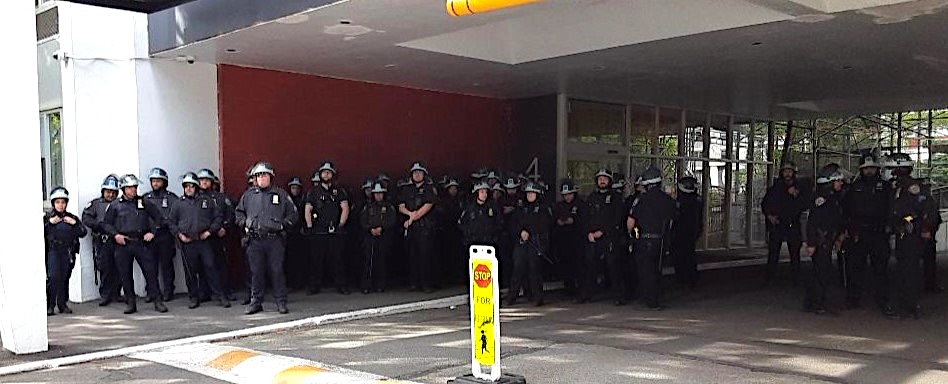
John Beckman, an N.Y.U. spokesperson, said the May 3 police action was purposely planned for early morning.
“At about 6 a.m. Friday, the N.Y.P.D. came to the Greene St. Walkway to assist in addressing the encampment,” he said. “Most of those there — about 30 — chose to leave, and were permitted to do so; about a dozen who were unwilling to leave were arrested. The process took about 20 minutes and involved minimal disruption and minimal confrontation. Conscious, as we were, of what has happened across the country when the police have been called in to address an encampment, the early morning was chosen to minimize the likelihood of injury or spread of disruption.”
Of note for land-use aficionados, Beckman noted that the protesters were, in fact, also violating part of the July 2012 restrictive declaration for the “N.Y.U. Core” rezoning for the extra-wide superblock, which allowed the school to build its huge new Paulson Center. The document was signed about a year after Occupy Wall Street, which first popularized the idea of tent encampment protests.
“N.Y.U. requested the assistance of the N.Y.P.D.,” Beckman said, “because of the unwillingness of protesters — who were violating the university’s rules and the rules governing the walkway (an agreement we have with the city, which the protesters were violating) — to leave despite multiple requests and discussions.”
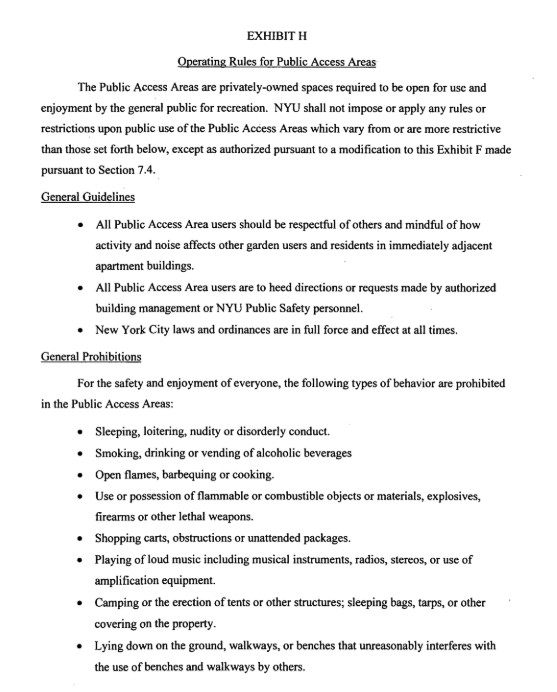
That was just one of the issues with the encampment, though, as far as N.Y.U. was concerned. Others included “growing safety concerns, particularly with regard to protesters and counter-protesters being drawn to the site; [and] numerous noise disruptions — including late at night — that far exceeded university rules.”
In short, Beckman said, “The encampment had become increasingly untenable for the N.Y.U. community and the neighborhood we inhabit.
“This was not about the content of the protesters’ speech,” he said, “but rather, about the nature of this protest, including the threat it posed to our community.”
N.Y.U. President Linda G. Mills put out a lengthy statement of her own the day the encampment was evicted. She said especially concerning was that the tent city was attracting outside protesters to the site — and that things, as a result, were beginning to turn violent.
“Most prominently,” she said, “on May 1, some 500 people broke off from a May Day march up Sixth Ave. and went to the Greene St. Walkway site. This led to hours of disruption, vandalism and violence. One person — someone who objected to the demonstration — was struck with a thrown bottle. Eggs were thrown at demonstrators. A counter-protester was put in handcuffs. There were several calls from the encampment for outside actors to join their ‘militant political space.’ Our Campus Safety personnel who were on the scene expressed concern that the incident had come perilously close to evolving into more widespread violence.”
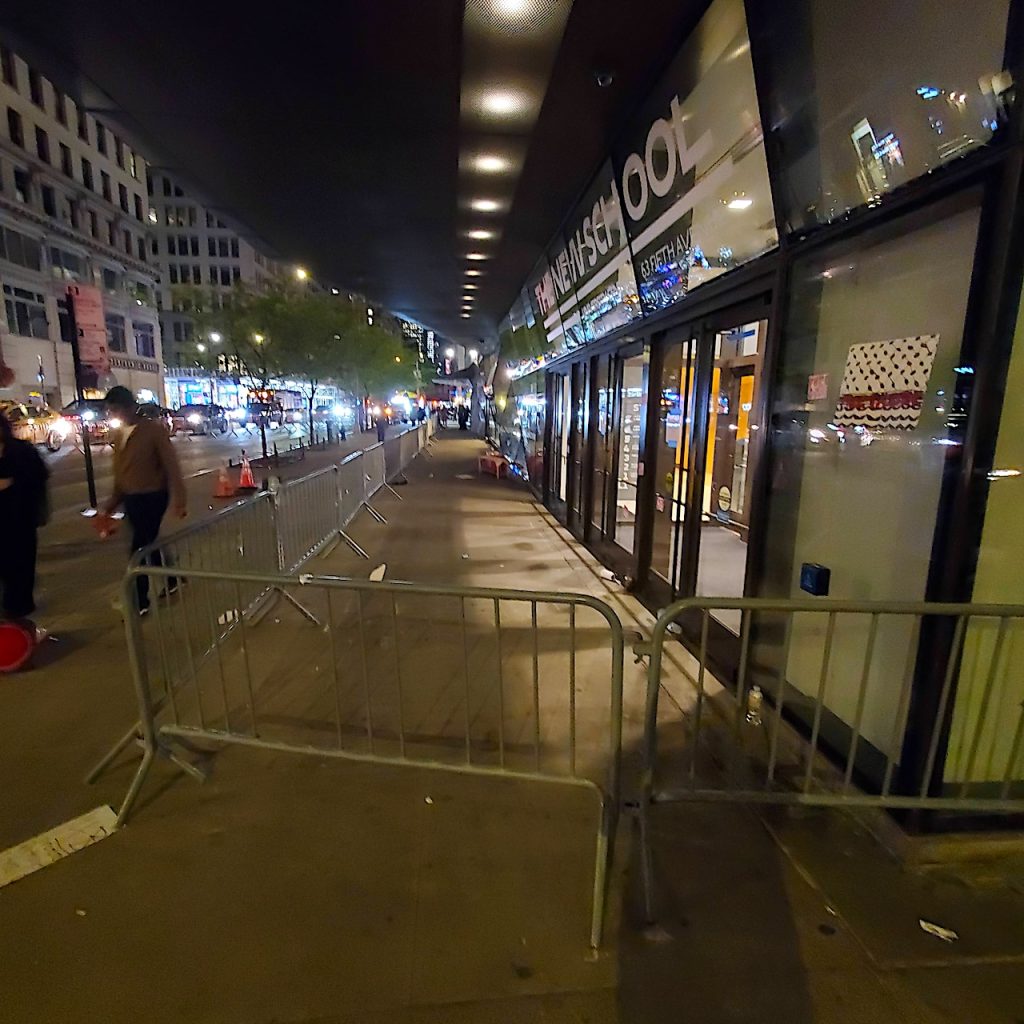
The president added that also influencing the decision to end the occupation were “bomb threats on April 25 and 26,” as well as “threats directed at me,” plus “vandalism at the building at which I and many faculty members and their families live and at 181 Mercer [the Paulson Center].
“The university’s senior leadership and I,” Mills said, “were compelled to conclude that we could not tolerate the risk of violence any longer and that we could not responsibly or in good conscience wait until something drastically worse were to happen in order to act. We needed to bring this to a close.”
The N.Y.U. president added that what was left behind only confirmed the call to pull up the tent city’s stakes, so to speak.
“That decision is underscored,” Mills said, “by what was found at the encampment site, including materials that reference ‘Death to Israeli Real Estate,’ ‘Destroy Zionist business interests everywhere,’ ‘Enough with De-Escalation Trainings: Where are the Escalation Trainings!’ ‘You will not find a truce from us’ and ‘Death to America.’ Moreover, there is a specific reference encouraging our students to ‘welcome “outside agitators to our struggle.”
“Let me say unequivocally,” Mills stressed, “this was about the violation of university rules and the escalating risk to the safety of our community.”
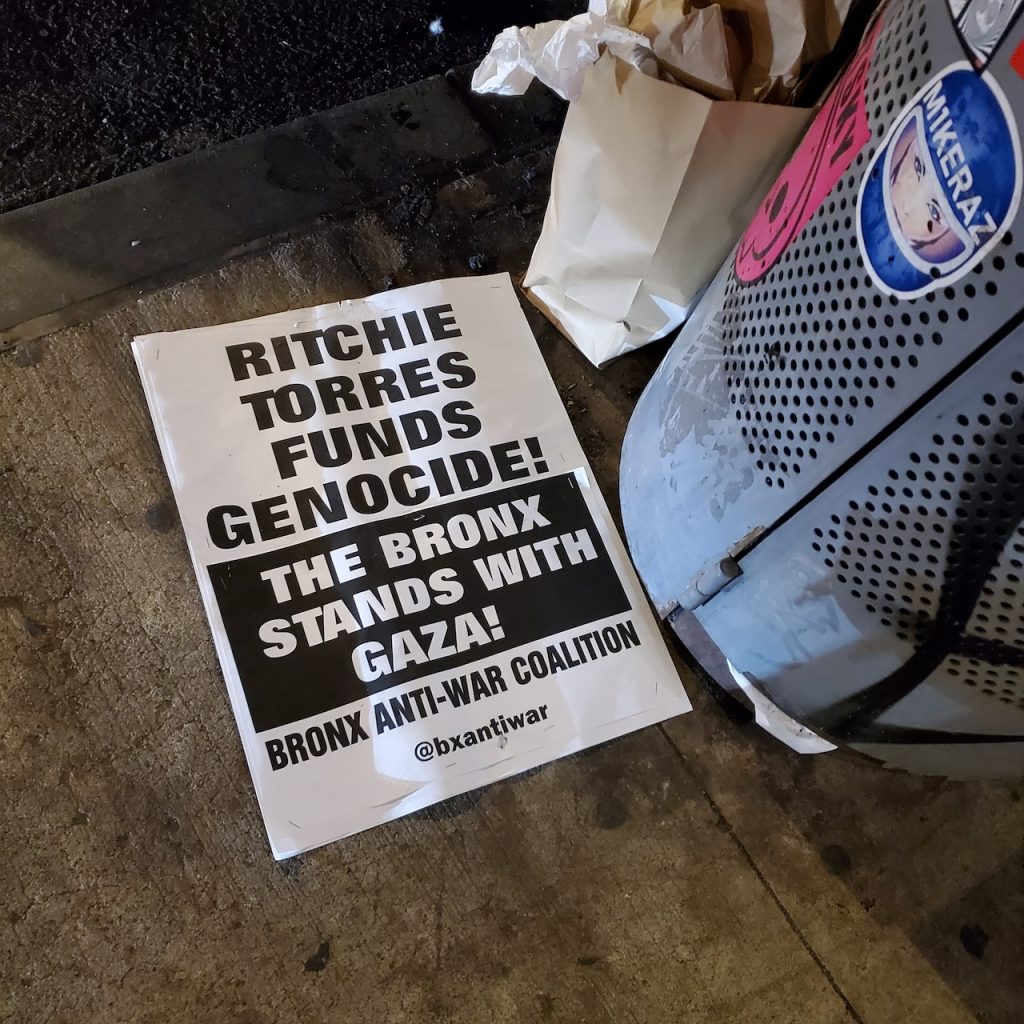
In the case of The New School, according to news reports, the student protesters had violated an agreement they had made with the administration. Two weeks ago, the protesters are said to have agreed to move their demonstration, in return for a meeting with the school’s board of trustees, at which the protesters could make their case for divesting from companies with ties to Israel.
However, according to news reports, less than 24 hours later, the protesters violated that agreement and “escalated the situation” by setting up a second encampment on campus, at Parsons.
The New School University Center also houses 600 students, so access to the dorm became an issue, especially on the day when police broke up the encampment.
“I deeply regret having to do this,” Donna Shalala, the school’s interim president, said in a statement. “My decision is about their conduct, not speech.”
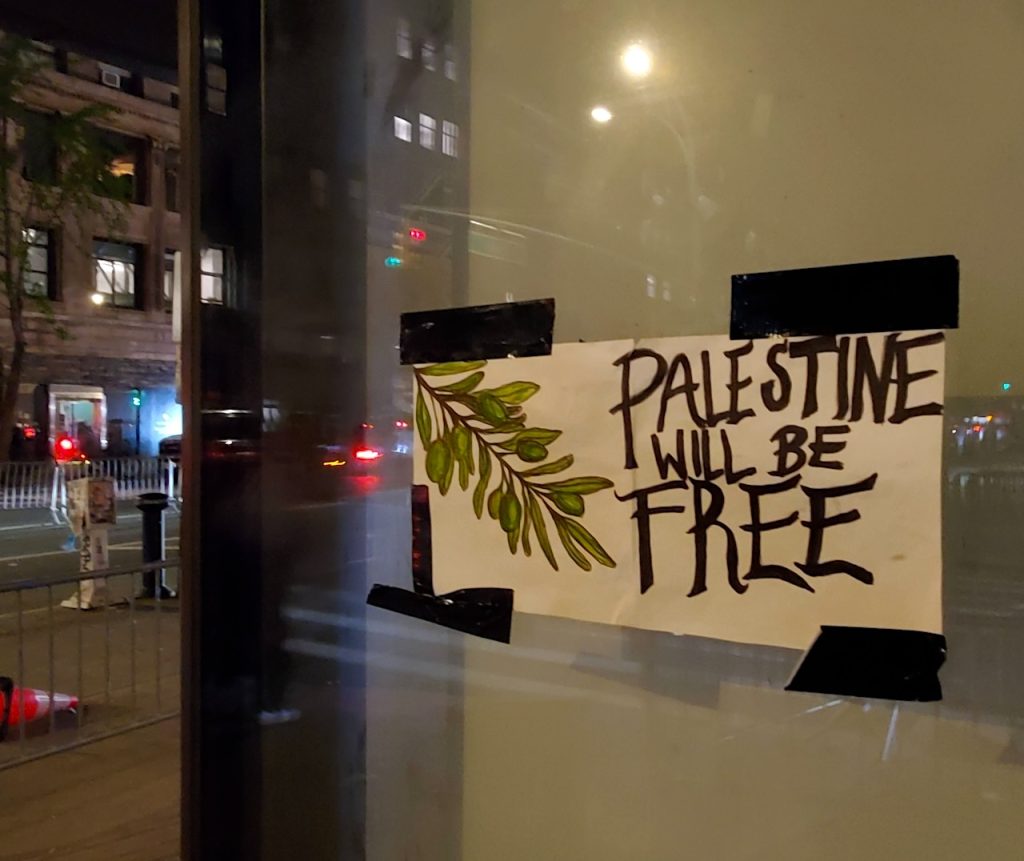
N.Y.U. commencement is May 15 and The New School’s is May 17. On Monday, Columbia announced that, due to the ongoing student unrest, it has canceled its university-wide commencement that traditionally takes place on the lawn in its central quad.
It remains to be seen whether, once the school year ends, the protests will peter out.

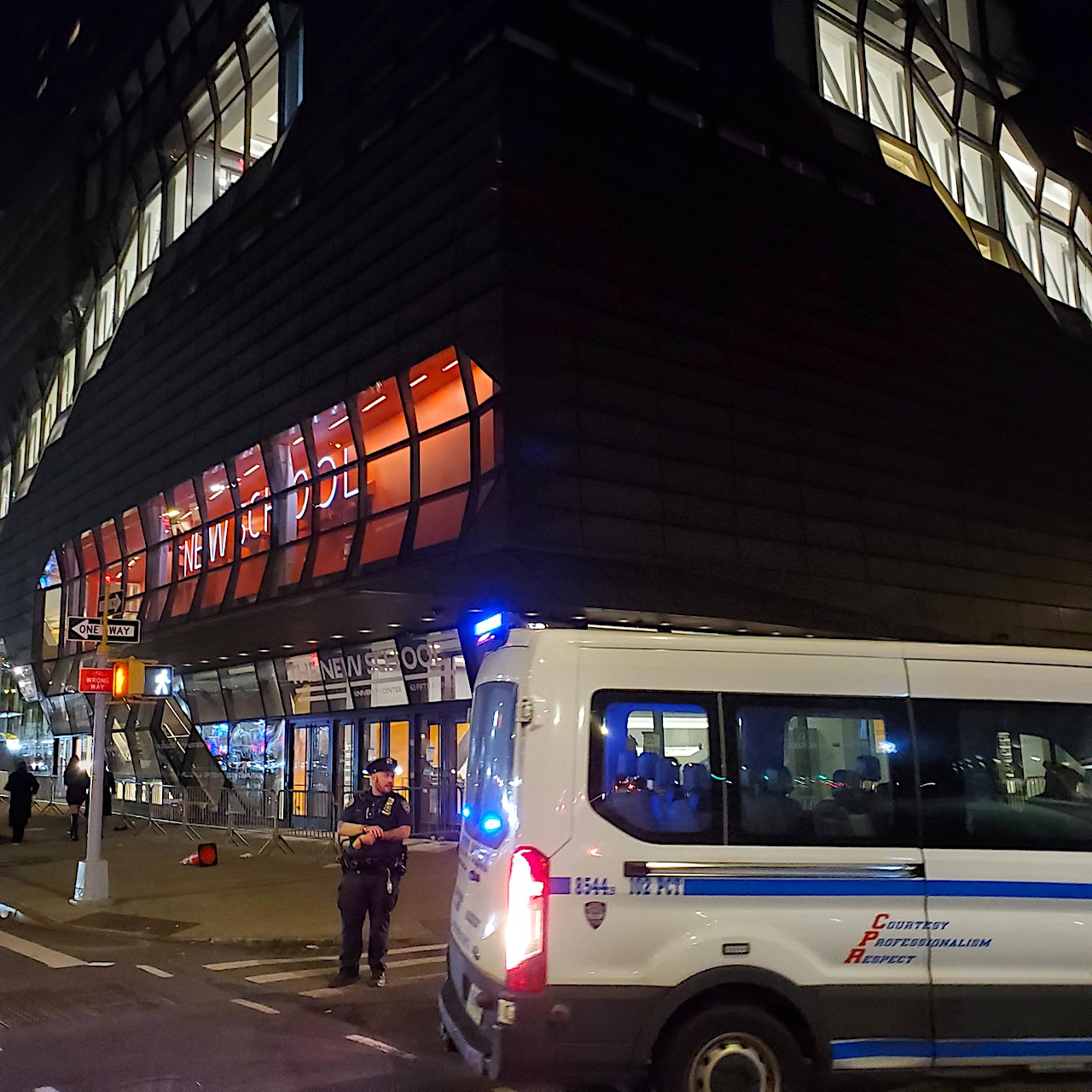
Enough! Talk to the protesters!